By BRYAN CLARK
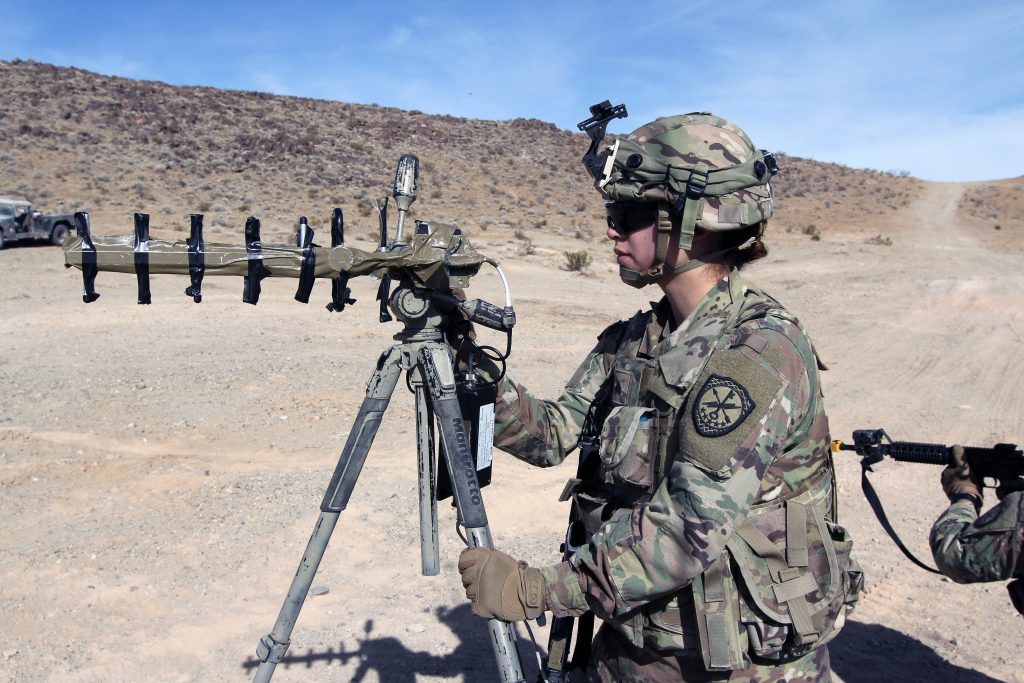 After a quarter-century of post-Cold War neglect, the Department of Defense has once again become serious about electronic warfare: the art of detecting, disrupting, and deceiving enemy radio and radar. But battles between electrons are invisible, literally and often politically as well, and EW must fight for attention and resources with higher-profile efforts from hypersonic missiles and missile defense to combat readiness for everything from fighter jets to nuclear submarines.
After a quarter-century of post-Cold War neglect, the Department of Defense has once again become serious about electronic warfare: the art of detecting, disrupting, and deceiving enemy radio and radar. But battles between electrons are invisible, literally and often politically as well, and EW must fight for attention and resources with higher-profile efforts from hypersonic missiles and missile defense to combat readiness for everything from fighter jets to nuclear submarines.
DoD will need to sustain its emphasis on the electromagnetic spectrum, which, along with outer space and cyberspace, is where commanders will find – or fail to find – the information that wins or loses futures battles. Recognizing this trend, China retooled its military in 2015 to combine space, computer network operations, and EW organizations under a single command focused on winning the information competition. Indeed, with both Russia and China willing to hack networks, jam transmissions, and even test anti-satellite weapons, all three domains are already active zones of great power competition and so-called “grey zone” conflict — even if no bullets are flying and no human bodies are falling. If the US military is to make needed investments in all three areas with a flat or declining budget it will need to cut spending on traditional types of military power.
An “Intrepid Tiger II” jamming pod on a Marine Corps F-18 Hornet
From Concepts to Capabilities
There are real signs of a renaissance in electronic warfare. Since the beginning of 2017, DoD published a new EW strategy, the Air Force mounted a service-wide studyof future EW needs, electromagnetic battle management (EMBM) emerged as a joint operational priority, the Navy intensified its EW training and , and the Army and Marine Corps began rebuilding their EW ranks. The department also consideredestablishing the electromagnetic spectrum as a warfighting domain alongside air, land, space, sea, and cyberspace, although it hasn’t decided to do so — yet.
Now comes the hard part: translating new strategies and concepts into doctrine, requirements, and systems in the field. During 2019, DoD will have the opportunity to demonstrate whether its renewed embrace of EW reflects a changed approach to warfighting or is simply a reaction to recent Russian and Chinese efforts at controlling the EM spectrum. A key measure of DoD’s commitment will be how much it is able to shift from traditional warfighting concepts and capabilities to new ways and means that exploit fundamental U.S. advantages in EM spectrum operations and target enemy weaknesses.
Russian Krasukha-2 radar jamming system, reportedly deployed in Syria
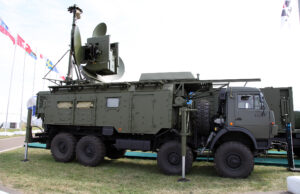 In a flat budget environment punctuated by readiness shortfalls and rising sustainment costs, the Defense Department is unlikely to receive any extra money to improve U.S. cyber, space, and EW capabilities. And with the attention being paid to Cyber Command and the Space Force, efforts to restore U.S. superiority in the EM spectrum may end up being last in line for funding. Other areas of investment will likely need to be reduced for DoD to fund the capability improvements it needs in these “invisible domains.” So expect for 2019 to be a year of hard choices.
In a flat budget environment punctuated by readiness shortfalls and rising sustainment costs, the Defense Department is unlikely to receive any extra money to improve U.S. cyber, space, and EW capabilities. And with the attention being paid to Cyber Command and the Space Force, efforts to restore U.S. superiority in the EM spectrum may end up being last in line for funding. Other areas of investment will likely need to be reduced for DoD to fund the capability improvements it needs in these “invisible domains.” So expect for 2019 to be a year of hard choices.
The first hard choice is between growing capability — the technology, training, and organizations to do new things — and preserving capacity — the number of people, ships, aircraft, and vehicles required to do things on a large scale. Although this is a longstanding argument, it has usually assumed current operational concepts will remain valid and future conflicts will look a lot like previous ones. Capability and capacity are arguably both valuable in that context.
By contrast, the emerging great power competition is likely to be a long-term rivalry in which the stakes on any given day are arguably lower than the existential stand-off of the Cold War. Military confrontations during this new competition could occur more frequently and at smaller scales than is traditionally projected in DoD plans for conflict with China or Russia — skirmishes instead of world war. At the same time, new technologies in areas such as artificial intelligence, cyber operations, hypersonic weapons, directed energy, and robotics could enable small-scale engagements to be short, intense, and destructive.
This shift in the scale and intensity of warfare argues for prioritizing capability over capacity, at least in the near-term. Senior DoD leaders have recently suggested this is the direction they are leaning in the 2020 budget, particularly if it is lower than originally planned. An emphasis on capability will be a necessary first step if DoD is to have the resources for new warfare systems, specialists, and training for space, cyberspace, and the EM spectrum.
EC-130 Compass Call electronic warfare aircraft
 The second set of hard choices will be in how the military equips and operates its forces. Today’s Defense Department relies on radios and radars that pump out a lot of power over a wide area — powerful, but also easy for an adversary to detect and target.
The second set of hard choices will be in how the military equips and operates its forces. Today’s Defense Department relies on radios and radars that pump out a lot of power over a wide area — powerful, but also easy for an adversary to detect and target.
To avoid detection while still coordinating operations and hunting the enemy, DoD will need to increase its investment and experimentation in low probability of intercept/low probability of detection (LPI/LPD) communication systems and passive or multi-static (multiple-site) sensors. Even more challenging, however, the U.S. military will also need to reduce its reliance on high-power communication systems that broadcast in all directions – “omnidirectional” systems such as the NATO standard Link-16 – and on active, single-site (monostatic) sensors, such as long-running SPY series of shipboard radars and the new Lower-Tier Air and Missile Defense Sensor. There is some evidence DoD will start making this shift technologically and operationally during 2019.
The Army is producing a handful of Electronic Warfare Tactical Vehicles (EWTVs) to test new technologies and tactics.
Where to Invest
Enemy jamming of US and allied communications is a growing concern, especially given DoD’s widespread reliance on legacy radios and datalinks. Protecting communications from jamming usually requires the use of complex waveforms, frequency hopping (either pre-planned or rapidly improvised by “cognitive” software), higher power levels, and/or directional beams. DoD will implement improvements to Link-16 in 2019 that incorporate some or all of these features. The most fundamental way to avoid being jammed, however, is to keep the enemy from detecting your communications in the first place. That requires LPI/LPD communication systems, which are growing in importance beyond niche capabilities and are increasingly becoming the assumed baseline communication network for new DoD systems and operational concepts.
While older aircraft like the EA-18G and EC-130H jam enemy systems from a distance, stealthy F-22s and F-35s can slip through air defenses to conduct electronic warfare at close range.
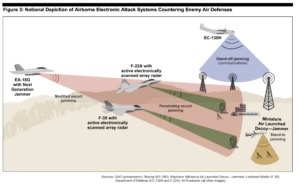 Sensors are also evolving to become less detectable to an enemy. Passive radio-frequency (RF) sensors have existed as long as radios and radars, and the use of direction-finding (DF) is a longstanding method to determine the rough bearing to an emitter. But what is new, and potentially revolutionary, is that modern computing increasingly allows a moving platform to quickly geolocate and target an adversary radio or radar. The Navy has been experimenting with using the E/A-18G Growler’s AN/WLR-218 radar receiver for passive targeting of emitters, and it will be fielding new passive RF sensors on the MQ-4C Triton drone. General Atomics is also integrating a new RF sensor on its MQ-9 Reaper to conduct passive targeting.
Sensors are also evolving to become less detectable to an enemy. Passive radio-frequency (RF) sensors have existed as long as radios and radars, and the use of direction-finding (DF) is a longstanding method to determine the rough bearing to an emitter. But what is new, and potentially revolutionary, is that modern computing increasingly allows a moving platform to quickly geolocate and target an adversary radio or radar. The Navy has been experimenting with using the E/A-18G Growler’s AN/WLR-218 radar receiver for passive targeting of emitters, and it will be fielding new passive RF sensors on the MQ-4C Triton drone. General Atomics is also integrating a new RF sensor on its MQ-9 Reaper to conduct passive targeting.
A weakness of both traditional direction finding and advanced geolocation is the target needs to emit radio frequency energy to be detected and tracked. Visual electro-optical (EO) and infrared (IR) sensors can get around that problem by detecting the visible light or heat energy an object reflects or emanates — and EO/IR sensors are inherently passive, with no active emissions for an enemy to detect. Ground forces and unmanned aircraft have long relied on EO and IR sensors to find enemy troops and other targets because of the sensors’ relatively small size and power requirements. Now EO/IR is increasingly important to manned aircraft as well: With the F-35’s upgraded EO/IR Distributed Aperture System and new infrared search and track (IRST) pods, the Navy and Air Force will be improving their ability to find and engage targets that are not operating their radars or radios.
DoD is also likely in 2019 to increase its emphasis on multistatic radar: The “multi” refers to using multiple sites or vehicles, only one of which actively emits RF energy to illuminate a target. The energy is then passively detected by radar receivers on the other platforms, which don’t have to emit themselves. For example, the Navy is experimenting with ways to use unmanned surface vessels as emitters for multistatic detection of targets by radar arrays on destroyers or future frigates, thus drawing enemy fire away from the expensive manned platforms, which don’t emit, and risking the expendable robot-boats instead. The Air Force is also pursuing passive radar,which is the ultimate form of multistatic radar: Instead of using an active emitter, passive radar relies on the ubiquitous background RF emissions from civilian TV and cell phone towers to illuminate the target.
Even if they can avoid enemy jamming and passive detection, U.S. forces will still need to obscure and confuse adversaries’ radars and disrupt enemy communications. With the advent of adaptive, frequency-agile radars and radios among U.S. competitors, jamming increasingly will require systems able to operate across wider swaths of the RF spectrum that can detect and disrupt adversary transmissions with the help of cognitive and machine learning algorithms.
The Navy’s current shipboard electronic warfare system, the 1970s-vintage AN/SLQ-32, will be replaced by SEWIP
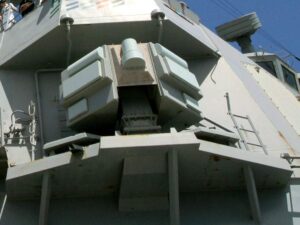 DoD has advanced these new EW capabilities, which will continue to improve in 2019 with new digitally-controlled systems using electronically-scanned arrays instead of traditional analog systems with moving parts and hard-wired signal characteristics. Prominent examples include the Navy’s SLQ-32 Surface Warfare Electronic Warfare Improvement Program (SEWIP) Block 2 and 3 and Next Generation Jammer (NGJ) Block 1 and Block 2, the Army’s Multifunction EW (MFEW) ground and air components, and the Marine Corps’ Intrepid Tiger program. These EW systems and others are now incorporating cognitive and machine learning algorithms from two DARPA programs, Adaptive Radar Countermeasures and Behavioral Learning for Adaptive Electronic Warfare (BLADE).
DoD has advanced these new EW capabilities, which will continue to improve in 2019 with new digitally-controlled systems using electronically-scanned arrays instead of traditional analog systems with moving parts and hard-wired signal characteristics. Prominent examples include the Navy’s SLQ-32 Surface Warfare Electronic Warfare Improvement Program (SEWIP) Block 2 and 3 and Next Generation Jammer (NGJ) Block 1 and Block 2, the Army’s Multifunction EW (MFEW) ground and air components, and the Marine Corps’ Intrepid Tiger program. These EW systems and others are now incorporating cognitive and machine learning algorithms from two DARPA programs, Adaptive Radar Countermeasures and Behavioral Learning for Adaptive Electronic Warfare (BLADE).
Most encouraging, DoD made significant progress during the last year implementing the training and personnel elements of its EW strategy. Each service implemented training for all its personnel on the importance and use of the EM spectrum and is professionalizing its cadre of EW experts. After essentially divesting of the EW mission except for defense against radio-controlled improvised explosive devices (RCIEDs), the Army and Marine Corps are now fielding new families of EW systems and adding specialists to operate them. The joint community is developing concepts for managing EM spectrum operations in anticipation of new ways of fighting with the next generation of capabilities.
That next generation will not come, however, unless DoD accepts that reductions in traditional capabilities on land, in the air, or on the sea may be needed to free up people and dollars to improve its ability to fight in outer space, cyberspace, and the electromagnetic spectrum.

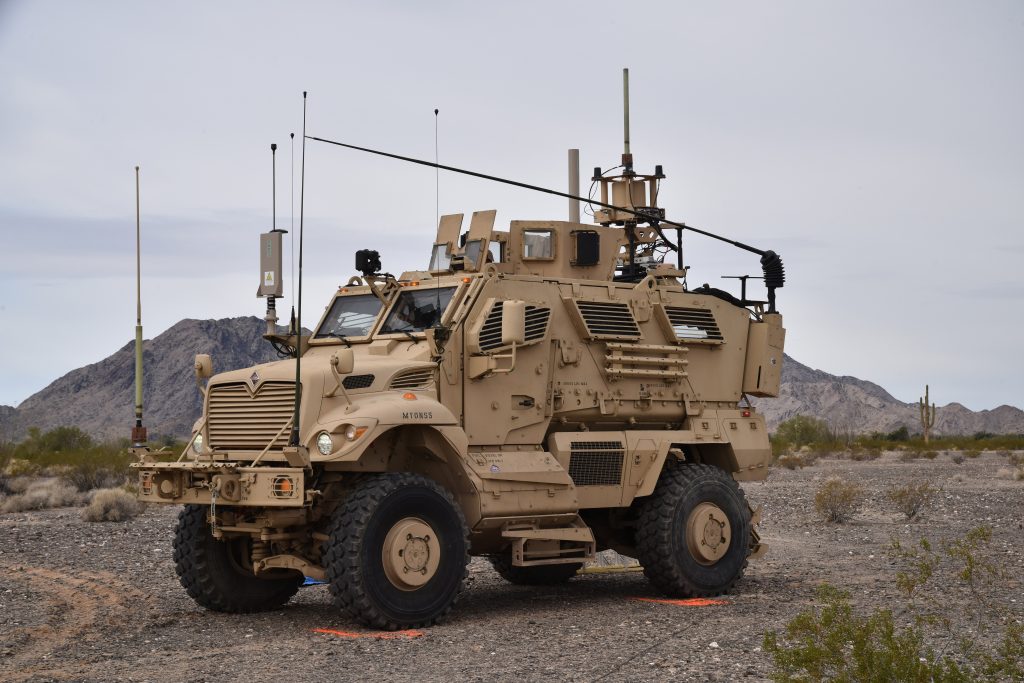
No comments:
Post a Comment